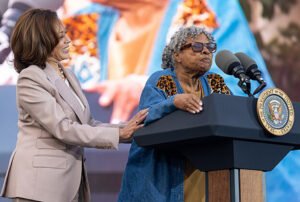September 26, 2012; Source: Alabama’s 13 (Associated Press)
The city fathers of Selma, Ala., have come to their senses, at least politically, and voted to halt the construction of a new monument to Confederate General Nathan Bedford Forrest. Forrest was the first Grand Wizard of a new organization in his time, the Ku Klux Klan. The construction of the new monument was to replace an earlier statue of the general that had somehow disappeared.
The Selma City Council’s decision to halt construction on the monument was due, it said, to a controversy over whether the city or a Confederate heritage group owned the monument site. However, the Associated Press reports that the Council’s decision was prompted by a march of protesters to Selma City Hall. This echoes the protests of 10 years ago when the statue was placed outside of a city building. In addition, the Daily Beast’s Abigail Pesta notes that a related Change.org petition with more than 325,000 signatures was delivered to the Selma City Council on Tuesday.
Sign up for our free newsletters
Subscribe to NPQ's newsletters to have our top stories delivered directly to your inbox.
By signing up, you agree to our privacy policy and terms of use, and to receive messages from NPQ and our partners.
With the disappearance of the concrete manifestation of Forrest, civil rights leaders thought that this might be a good time to do away with the visible association of Selma with the nation’s first Klan leader. They could have also added more to the charges against Forrest. Under Forrest’s direct command, Confederate forces massacred surrendering black Union army soldiers at Fort Pillow in 1864, which Ulysses S. Grant wrote in his memoirs was an incident that “shocks humanity.”
The statue of Forrest does have its supporters. A spokesperson for “Friends of Forrest” expressed concern that the debate over whether to build the new statue was merely an effort to divert attention from investigations of who might have absconded with the original statue. Another member of Friends said he would “recommend this man for any young people to model his life after.”
Selma was the site of one of the bloodiest moments in the our nation’s civil rights movement, where three marches led by the Student Nonviolent Coordinating Committee were attempted from Selma to Montgomery, Ala. In the first march, known as “Bloody Sunday,” 600 demonstrators led by now-Congressman John Lewis were met with an attack by police with dogs and billy clubs. The second march consisted of 2,500 demonstrators and was led by Martin Luther King, Jr.; the march was turned back by police after demonstrators crossed the Edmund Pettus Bridge. The third march finally reached Montgomery, but only because of the protection of U.S. Army soldiers, Alabama National Guard soldiers under federal command, and scores of FBI agents and federal marshals.
It’s not clear to us how honoring Nathan Forrest for terrorizing and massacring blacks in the south quite fits the modern symbolism and meaning of Selma, Ala. It’s time for the Friends of Forrest and the confederate society that claims it owns the land to give up on the idea of honoring the likes of Nathan Bedford Forrest.—Rick Cohen













